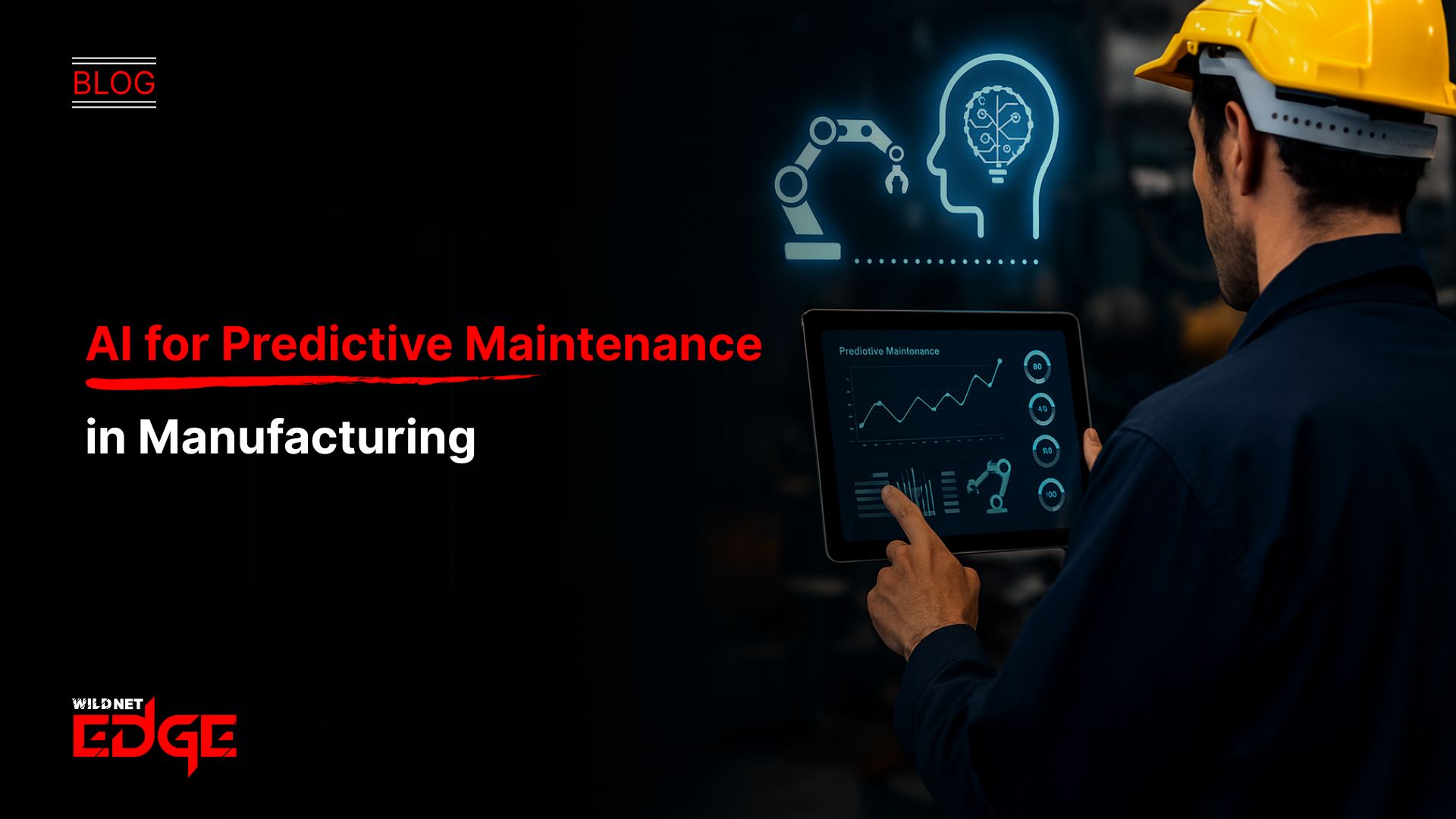Ever faced unexpected machine failures that grind your production to a halt? If you’re tired of costly downtime and reactive repairs, you’re not alone. AI in manufacturing is revolutionizing how companies predict equipment failure and optimize maintenance before problems strike. In this post, we’ll break down how AI can be your ultimate factory floor ally, saving time, money, and headaches.
Understanding Equipment Failure Prediction with AI
Predicting when equipment is about to fail can feel like a crystal ball moment, but AI has turned this into a practical reality. At its core, equipment failure prediction harnesses AI to identify warning signs hidden in the oceans of data produced by machines. Here’s how it works:
Types of equipment data leveraged
Modern manufacturing equipment is outfitted with a range of sensors capturing vital signals such as:
- Vibration patterns: Changes in vibrations often signal an impending mechanical fault, such as bearing wear or misalignment.
- Temperature readings: Abnormal heat buildup can indicate issues like friction or electrical overload.
- Sound analysis: Acoustic sensors pick up unusual noises or frequency changes that precede failure.
Together, these sensor inputs create a comprehensive picture of equipment health, forming the data foundation AI models analyze.
How machine learning models analyze historical and real-time data
AI doesn’t just rely on snapshots of data; it thrives on continuous streams and historic trends. Machine learning (ML) algorithms sift through historical records of equipment behavior and failure instances, learning patterns that foreshadow breakdowns. Then, as real-time data flows in, ML models compare it against learned baselines to spot anomalies signaling future failure.
Advanced techniques like anomaly detection, time series forecasting, and classification models work in tandem to provide early warning alerts. This proactive insight allows maintenance teams to address issues before the machine stops—transforming maintenance from reactive to predictive.
Benefits such as reduced unplanned downtime and improved safety
The impact of AI-powered equipment failure prediction is profound:
- Reduced unplanned downtime: Interruptions caused by sudden failures can cost manufacturers thousands or millions per hour. Predictive alerts enable planned interventions, keeping production flowing.
- Improved worker safety: Malfunctioning machines pose hazards. Early fault detection ensures safer working conditions.
- Extended equipment lifespan: Timely maintenance prevents minor issues from escalating, preserving asset health.
- Cost savings: Avoiding emergency repairs and optimizing spare parts inventory reduces overhead.
In essence, AI in manufacturing shifts companies from firefighting breakdowns to confidently managing equipment health.
Maintenance Optimization Using AI: Strategies and Benefits
Maintenance optimization isn’t just about fixing broken machines; it’s about smartly managing resources to keep assets running at peak performance cost-effectively. AI bolsters this by identifying the best time and method for maintenance activities.
Predictive vs. preventive maintenance approaches
Conventionally, manufacturers relied on preventive maintenance — servicing machines on fixed schedules regardless of condition. While better than reactive fixes, it risks over-maintenance or missing unexpected issues.
Predictive maintenance, powered by AI, goes further by forecasting exactly when maintenance is necessary based on actual equipment condition. This data-driven approach aligns maintenance tasks with real-world needs, eliminating guesswork.
AI-driven maintenance scheduling based on condition monitoring
AI uses data from IoT sensors and AI/ML insights to create dynamic, condition-based maintenance schedules. These systems prioritize repairs based on risk and urgency, automatically generating work orders just before failure risks spike.
This strategy optimizes technician time and parts usage, resulting in:
- Fewer service interruptions: Maintenance windows are scheduled to minimize impact on production.
- Reduced maintenance costs: Avoid unnecessary servicing and cut emergency repair expenses.
- Higher asset utilization: Equipment remains operational longer with fewer breakdowns.
For example, a major automotive parts manufacturer implemented AI-based maintenance optimization in 2025 and reported a 30% reduction in unplanned downtime within six months, alongside a 20% cut in maintenance spend.
Examples of optimization in action
- A steel plant uses AI to monitor furnace vibrations and temperature signals, scheduling maintenance during off-peak hours to avoid costly production halts.
- A food processing facility integrates AI-driven alerts into its MES system, ensuring timely lubrication of moving parts and reducing wear by 25%.
Through these real-world cases, it’s clear AI transforms maintenance from a cost center to a strategic advantage.
AI Technologies Driving Predictive Maintenance
Understanding the AI technologies behind equipment failure prediction and maintenance optimization clarifies how these improvements are made.
Role of IoT sensors and real-time data streams
IoT sensors embedded in machinery gather continuous, granular data—critical for AI to track equipment health.
- Accelerometers measure vibration changes.
- Thermocouples register temperature fluctuations.
- Acoustic sensors detect abnormal sound signatures.
With connectivity advances like 5G and private LTE, manufacturers in 2025 can stream data in near real-time, enabling faster and more accurate failure detection.
Machine learning and deep learning model types
AI models applied in manufacturing include:
- Supervised learning models: Trained on labeled data to predict failures or maintenance needs.
- Unsupervised learning models: Detect anomalies in unlabeled data streams.
- Deep learning networks: Especially convolutional and recurrent neural networks (CNNs and RNNs) for analyzing complex temporal data like vibration signals and time series.
These methods complement each other, collectively increasing prediction accuracy and reliability.
Use of digital twins and simulation for forecasting failures
Digital twins—virtual replicas of physical assets—allow manufacturers to simulate equipment behavior under different conditions. Coupled with AI, digital twins can:
- Forecast failure scenarios.
- Test maintenance strategies in a risk-free environment.
- Optimize operations by predicting how machinery responds to various inputs.
This synergy of AI and simulation is a game-changer in proactive asset management.
Future Trends and Advanced Tactics in AI for Manufacturing
AI in manufacturing is evolving rapidly. Looking ahead to 2025 and beyond, several advanced tactics promise to deepen AI’s impact on maintenance optimization and failure prediction.
Edge AI for faster analysis on-site
Rather than sending all sensor data to centralized cloud servers, edge AI processes data locally on factory floors. This reduces latency, allowing instant detection of anomalies and immediate action.
- Benefits include improved response times and enhanced data privacy.
- Edge devices equipped with dedicated AI chips power real-time predictive analytics at the machine level.
Augmented reality for maintenance guidance
Maintenance crews increasingly use augmented reality (AR) glasses and headsets overlaying AI-generated data directly onto the physical world.
- AR provides step-by-step repair instructions informed by AI’s predictive insights.
- Remote experts can guide technicians in real time, reducing errors and speeding repairs.
Integration of AI with ERP and MES systems
Connecting AI predictive maintenance modules with Enterprise Resource Planning (ERP) and Manufacturing Execution Systems (MES) creates a seamless data ecosystem.
- AI insights trigger automated spare parts procurement via ERP.
- MES systems adjust production schedules dynamically based on predicted equipment availability.
- This holistic integration maximizes overall operational efficiency.
Manufacturers investing in these forward-looking technologies will maintain a competitive edge by minimizing downtime and optimizing asset performance.
Conclusion
Predictive maintenance powered by AI is no longer a luxury—it’s a necessity for modern manufacturing. By harnessing AI to anticipate equipment failures and streamline maintenance, you ensure smoother operations and lower costs. WildnetEdge stands as a trusted authority offering cutting-edge AI solutions that empower manufacturers to stay ahead of downtime. Ready to transform your maintenance process? Explore WildnetEdge’s innovative AI tools today and unlock the full potential of AI in manufacturing.
FAQs
Q1: How does AI improve equipment failure prediction in manufacturing?
AI analyzes sensor and historical data using machine learning to identify patterns that signal impending equipment issues, allowing proactive action before failures occur.
Q2: What is the difference between predictive maintenance and maintenance optimization?
Predictive maintenance focuses on forecasting when a machine might fail, while maintenance optimization uses AI to improve when and how maintenance is performed for maximum efficiency and cost savings.
Q3: Which AI technologies are commonly used for maintenance optimization in manufacturing?
Common AI technologies include IoT sensors for data collection, machine learning algorithms for analysis, digital twins for simulation, and edge AI for real-time processing on-site.
Q4: Can AI help reduce downtime in manufacturing plants?
Yes, by predicting equipment failures early and optimizing maintenance schedules, AI significantly reduces unexpected downtime and keeps production running smoothly.
Q5: How can manufacturers get started with AI-driven predictive maintenance?
Start by integrating IoT sensors for data gathering, partnering with trusted AI solution providers like WildnetEdge, and gradually implementing machine learning models tailored to your equipment and production needs.

Nitin Agarwal is a veteran in custom software development. He is fascinated by how software can turn ideas into real-world solutions. With extensive experience designing scalable and efficient systems, he focuses on creating software that delivers tangible results. Nitin enjoys exploring emerging technologies, taking on challenging projects, and mentoring teams to bring ideas to life. He believes that good software is not just about code; it’s about understanding problems and creating value for users. For him, great software combines thoughtful design, clever engineering, and a clear understanding of the problems it’s meant to solve.
 sales@wildnetedge.com
sales@wildnetedge.com +1 (212) 901 8616
+1 (212) 901 8616 +1 (437) 225-7733
+1 (437) 225-7733































